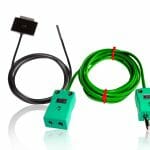Distribution automation for a failproof, diversified energy grid
In July 2021, the European Commission announced new ambitious targets for green energy. By 2030, 40 per cent of all the energy consumed in Europe should be generated renewably. While this is great for the planet, it adds another layer of complexity to energy grid management. The solution? Smart grids. Here, Johan van der Veen, an account manager specialising in energy at remote monitoring and control expert Ovarro, explains how distribution automation makes smart grids possible.
With rapid diversification and rising customer demand, these are challenging times for grid managers. The transition to solar, wind, and wave power means that energy production is as changeable as the weather — quite literally. This is compounded by growing demand for energy thanks to electric vehicles (EVs) and electric heating.
As a result, the energy distribution landscape is changing. Rather than the traditional top-down structure of one producer to many customers, now there is a shifting dynamic of energy being fed back and forth as usage peaks and troughs.
But, if supply and demand don’t align, it can lead to higher rate of power loss or unavailability incidents. Nobody wants a power failure, especially with heavy fines and public opinion on the line.
All this means that energy grids need to work harder and, without huge amounts of investment in extra infrastructure, the easiest way to achieve this is to make them more efficient — smarter, even. Datawatt, now part of Ovarro, has been working on making grids smarter since 1977 — well before the term smart grid even existed — with distribution automation technologies.
Work smarter not harder
Distribution automation covers the final part of the energy network, between the last station and customers’ homes and businesses. While in the past this section of the grid has been unmanaged apart from meters, recent years have seen a trend towards extending monitoring and control activities to this low voltage side.
Smart grids rely on monitoring equipment to collect data and analyse it. All this information can be used to predict problems, or identify them quickly once they do occur, helping grid operators take preventative or remedial action.
In layman’s terms, an electricity grid is like a chain of cables — a failure in one link means the whole chain doesn’t work. Smart grids can automatically identify and isolate the fault location, remotely switching gear so customers are supplied from another part of the grid.
Previously, grid engineers would have had to drive between distribution stations until they found the one with the fault. Smart grids with remote monitoring capabilities streamline this task so that maintenance teams can go directly to the source of the problem, reducing outage duration.
Solutions for smart grids
Ovarro offers remote monitoring and supervisory control and data acquisition (SCADA) systems designed for distribution grids. The Datawatt Smart Grid (DSG) series of remote telemetry units (RTUs) operates with flexibility and security in mind, adhering to European Network for Cyber Security (ENCS) security standards. The DSG operates on Linux, the modern open-source platform known for reliability and stability.
Ovarro RTUs like the DSG collect and manage data, before making it available to other systems for processing and analysing. As well as RTUs, Ovarro assembles cabinets that include a combination of its own products and third party hardware, offering complete solutions that are quick and easy to install in the field.
For smaller operators, there’s the Datawatt Stream webscada, a central system and web portal that collects data in real-time and makes it immediately available on digital devices. Ideal for controlling different locations and processes, this easy to use system ensures worry-free management and maintenance. Furthermore, the data can also be imported into the customer’s central system, so everything is available in one place.
It’s access to data that makes grids smart. Therefore, RTUs and SCADA systems are the building blocks of modern smart grids, collecting and analysing the large amounts of process data necessary for faster, and better, decision making.
As the energy sector comes to rely more heavily on renewable energy generation, in accordance with European climate targets, more effective distribution management will become essential. Automation offers one solution, with RTUs like the DSG series able to collect, analyse and act on data, helping to prevent power outages and resolve any faults quickly.
For more information on remote monitoring for energy grids, head to Ovarro’s website.








